
Полная версия
Bible of the Time. …from the Big Bang to the present day…
Ukraine then, both in colloquial speech and in all official documents, is called Little Russia, or the Hetmanate. The agreement between the Russian tsar and the Cossacks is drawn up in the «Belarusian language». Muscovite Rus at that time was called «White». Later, the toponym shifts to the West and denotes present-day Belarus.
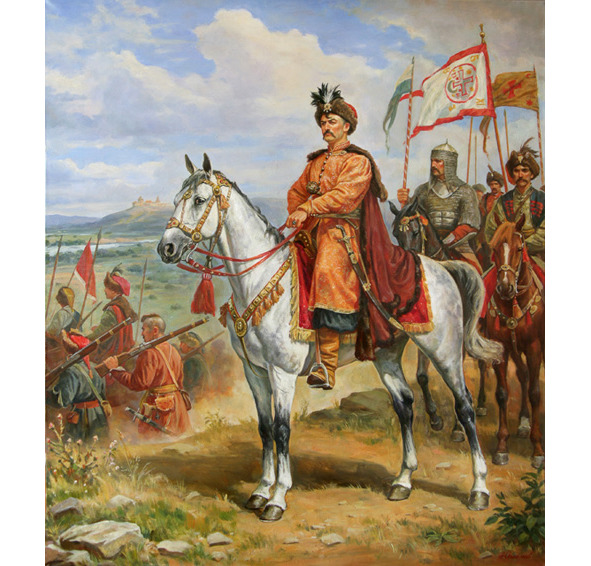
Hetman Bohdan Khmelnitsky (1595—1657)
In 1658 the war continues, but without the deceased Bohdan Khmelnitsky.
The former secretary, Ivan Vyhovsky, who himself became the «hetman of the Grand Duchy of Russia», carries out mass repressions among the Cossacks and concludes a separate agreement with the Commonwealth. According to its clauses, the Hetmanate becomes a federal unit of Poland. In the same year, Vyhovsky cracked down on the Cossack foreman, who was trying to find out where the tsarist money allocated for the maintenance of the Zaporozhye army went.
In 1659, Vygovsky succeeded in attracting the Crimean Khan Mehmed Giray the Fourth with a 30,000-strong army as an allies. Together they defeat the Russian detachment of A. Trubetskoy, which is besieging Konotop. Loss of seven for seven thousand. In Ukraine, more and more uprisings break out against Vyhovsky. The next hetman is the 18-year-old son of Bohdan Khmelnitsky. Yuri is not the successor of his father’s work, speaking, in general, against the unification of the lands. The offspring of Khmelnytsky is a henchman of the Poles, Ottomans, and does not pursue an independent policy. Realizing that the hetmanship is not for him, he becomes a monk, gets to the Tatars, Turks, who in the end deprive him of his head.
In the fall of 1663, the Polish army, plus the Crimean Tatars and detachments of the Principality of Lithuania, led by King Jan Kazimierz, made the last major operation. With heavy fighting, it occupies a dozen cities. The initiative is waking up in the Russian commanders. Competently leading the troops, they perform deceptive maneuvers, block the enemy garrisons, and raid the rear. The Polish-Lithuanian army retreats, losing three quarters of its strength. In 1666, the right-bank hetman Petro Doroshenko, who declared himself a vassal of the Turkish sultan, revolted against Poland. Thirty thousand Crimean Tatars come to the aid of his fifteen thousand Cossacks. The turmoil lasts for five years. Poland is restoring the state of affairs, but it is completely exhausting its strength. In the end, on January 30, 1667, the Andrusov armistice was signed between Russia and Poland. Rzeczpospolita recognizes the annexation of the Left-Bank Ukraine, Smolensk, the Chernigov Voivodeship, a number of small towns, preserves the Right-Bank Ukraine and Belarus. Russia is not yet in a position to retain some of its large territorial acquisitions.
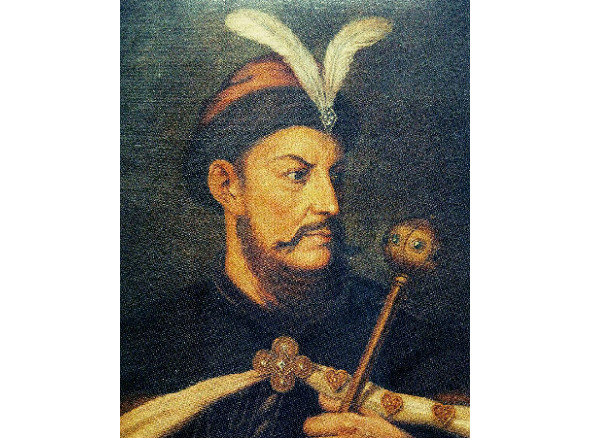
Hetman Petro Doroshenko (1627—1698)
…In the summer of 1672 Poland was attacked by the Ottoman Empire. By this time, the Turks and their vassal Doroshenko already owned the entire Right-Bank Little Russia. There is Islamization, the alteration of churches in the mosque, the recruitment of boys to janissaries, girls, again boys to harems, and the like. Fearing the invasion of the warriors of the Port on the Left Bank Ukraine, and not wanting to humiliate the Christian world, Russia enters the war with Turkey. Relations with Poland immediately warmed up. Cossacks and Cossacks (usually, Zaporozhye Cossacks are called through the vowel «O») are invited to attack the Crimean Tatar and Turkish possessions from the sea. Russia is trying to form a European coalition and even become its head. She does not succeed in this, but at least this attempt itself is evaluated favorably by the Western community. The fighting is covered in detail by the European press.
Poland is losing the war and officially gives the Right-Bank Ukraine to the Ottomans. Alexei Mikhailovich considers this a reason for extending the power of the crown to the whole of Little Russia, in the event of a victory over the mighty Port, of course. Events are not developing quite the way the Russians want them to. They are fighting the Turks and Crimean Tatars. Those intensify the repression against the population. The population falls away from the Ottomans and is immediately given over to the well-functioning Polish administration. A significant part of the inhabitants flees to the Russian Left-Bank Ukraine. The city of Chigirin occupies a special place in Ukraine at that time. It is the unofficial capital of the Hetmanate, a large Cossack camp and covers the strategic crossing of the Dnieper. The Russian-Ukrainian army captures the city, forces Doroshenko to swear allegiance to the Russian Tsar and withstands, intermittently, two Turkish sieges. The second of them (1678) shows the lack of experienced gunners, while the Ottoman guns shoot almost without a miss. Four Turkish guns are «super heavy». It takes 32 buffaloes to transport each. The ratio of forces in people is 1:10. The Turks are losing 30 thousand fighters from the 120-thousand army. The Russian-Ukrainian coalition is losing 15 thousand of the original 65 thousand. In the end, Romodanovsky’s troops, having formed in a huge square, retreat to the Dnieper and are evacuated to the Left-Bank Ukraine.
The war is reaching a dead end. Right-bank Ukraine, in any case, is arranged according to the Polish model. It is difficult to win back and keep it without an alliance with Poland. The Poles themselves, as a condition of the alliance, require huge sums to support their troops. In the end, according to the Bakhchisarai Peace Treaty (1680), the Port recognizes the entry of the Left-Bank Ukraine and Kiev into Russia. Right-bank Little Russia is now ruled by a Turkish vassal, the Moldovan ruler Gheorghe Duca. The Zaporizhzhya Sich becomes independent from Moscow. As before, Russia pays a semblance of tribute to the Crimean Khan.
In 1676, having declared the fifteen-year-old Fedor (mother – Maria Miloslavskaya) heir, the tsar died of a heart attack. Fyodor the Third reigns happily, but not for long, five years, leaving no heirs. It is not he, and not his brother Ivan the Fifth, who becomes the great emperor, but Peter the First, born in marriage with his second wife Natalia Naryshkina.
The Naryshkin clan declares that, dying, Tsar Fyodor personally handed over the scepter to Peter. The Miloslavskys angered the archers with rumors that the Naryshkins strangled Tsarevich Ivan. The military, despite the fact that they are introduced to the princes with their own eyes, kill several boyars. They do not dare to deal with Peter.
As a result, representatives of the Miloslavsky and Naryshkin families were married to the kingdom in 1682 at the same time. For the princes, they even arrange a throne with two seats. In fact, an active daughter from the first marriage of Alexei Tishaishy, the second regent of the royal brothers, Princess Sophia, rules.
In 1686 the tsarina signed the «Eternal Peace» with Poland. Kiev is assigned to the Russian kingdom (146 thousand rubles of compensation are paid), Zaporozhye, Smolensk, Chernigov. A number of devastated lands are included in the buffer territories. In addition, Russia joins the countries leading the war with the Ottoman Empire, the Holy League. In fulfillment of allied obligations, the First and Second Crimean campaigns are being undertaken. Both end the same way. Almost 100-thousand army, suffering deprivation of supplies and fresh water, returns back. In the first case (1687), the army gets to the Konka River, located 150 kilometers south of Dnepropetrovsk. In the second (1689) – it reaches Perekop. The idea of building fortresses to accumulate supplies is not being implemented. The troops of the more proactive Grigory Kosagov capture the strategically important Ochakov (Kara-Kermen, Black Fortress), located on the Black Sea coast near the mouth of the Dnieper. Only then, finally, the Russian kingdom ceases to pay tribute to the Crimean Khan.
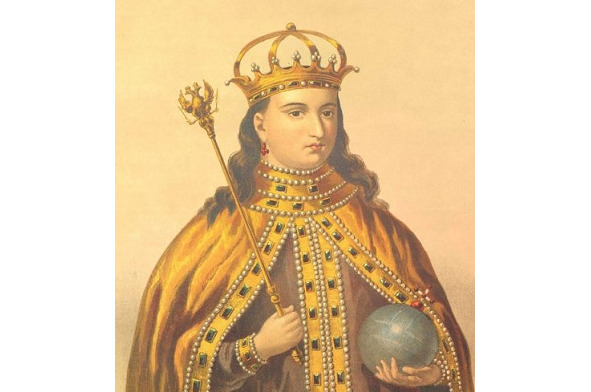
Princess Sophia Alekseevna (1657—1704)
The first, the Nerchinsk agreement with China is concluded. In general, Sophia’s reign was not marked by special events. Russia is accumulating strength to withstand the era of Peter the Great. Peter turns 17 in May 1689, and at the insistence of his mother he marries Evdokia Lopukhina. Love lasts a year. The Tsar finds solace in the arms of the daughter of a goldsmith from the German Suburb, Anna Mons. Despite the beginning of adulthood, almost no one around Peter takes his orders seriously. Rumors of an impending assassination attempt reach the king. Together with his closest relatives and confidants, Peter takes refuge in the Trinity-Sergius Monastery. From here he sends instructions to the regimental commanders to appear with a dozen people in person. Arriving archers are waiting for the sovereign’s mercy, vodka and feasts, but Peter himself leads the exemplary life of the Moscow Tsar. Sophia loses her supporters. She has to retire to the Novodevichy Convent, although she does not become a real nun until the suppression of the Strelets uprising. Ivan the Fifth meets Peter in the Assumption Cathedral and in fact gives up all power.
Peter likes to fight. In 1695 he carried out the First Azov campaign. More than 30,000 troops travel along the Don to the Azov (the top of the Sea of Azov), on transport ships and by land. Here it is revealed that it is impossible to take the city without warships. Only two fortresses overlapping the river are captured.
In the village of Preobrazhenskoye, on the banks of the Yauza, not far from Moscow, new transport and military ships are being built in a wild haste. They are disassembled and transported to Voronezh, to the Don, where they are assembled again. The number of troops reaches 70 thousand. In May 1696, Azov again fell into a siege. In July, after massive shelling, the garrison surrenders. According to the agreement, the Ottomans leave the city with their families and movable property. Voivode Shein becomes the first Russian generalissimo. Under the Constantinople Peace Treaty of 1700, Russia is officially exempted from paying tribute to the Crimean Khan. She receives Azov and a number of adjacent territories. But, the main goal – access to the Black Sea, even though through the Kerch Strait, is still not achieved.
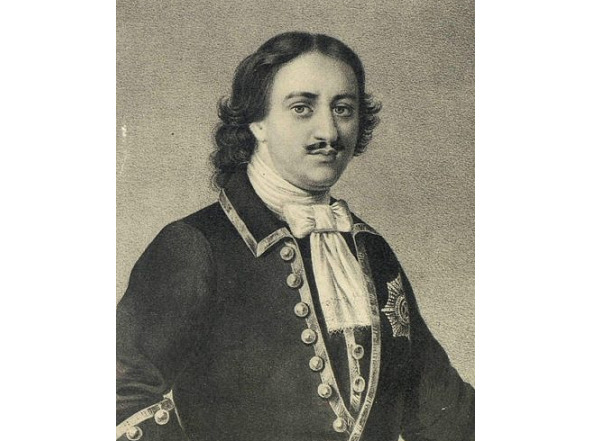
Peter the Great (1672—1725)
In 1697, Peter the Great, who a year ago became the autocratic tsar, presented as a «sergeant of the Preobrazhensky regiment», set off on a journey across Europe. The goal of the «Great Embassy» (60 people) is to gain allies in the fight against Turkey, purchase weapons and hire craftsmen. There are many inconsistencies during this period of government. Meetings with the English king William III in Utrecht, the ruler of Austria Leopold the First, with Newton, Leibniz, Levenguk, Halley (the same astronomer), are still classified as «secret». Some historians believe that Peter the Great does not participate in the Embassy at all.
.. It is impossible to reach an agreement with Austria and Holland on an alliance against the Ottomans. Vienna refuses even to recognize the transfer of Kerch and the corresponding strait to Russia, if they were captured by it. The young tsar has personal friendship only with the king of the Commonwealth Augustus II. For the election of his candidacy at the Polish Sejm, Peter the Great at one time made certain efforts and resources. Among other things, colleagues of the same age manage to agree on a joint war against Sweden.
Herbariums, tools and 15,000 small arms are being purchased.
In the summer of 1698, having received news of the uprising of the archers, the tsar returned to Moscow. The rebellion had already been suppressed by that time. The instigators have been punished. The troops of Generalissimo Shein, practically with one artillery, defeated a three-thousandth detachment of archers. Princess Sophia, the main reason for the revolt, becomes a full-fledged nun and goes to the Novodevichy Convent. He is in charge of the reprisals, according to the definition of Prince B. Kurakin, «… by his appearance as a monster, by his temper an evil tyrant, a great unwilling person to do good to anyone, drunk all the days», the ruler of Russia in the absence of Peter, Prince Caesar Fyodor Romodanovsky. The Emperor, however, needs more sacrifices. For the first time, Muscovites see the Russian Tsar in the guise of a fierce executioner. He not only personally cuts off the heads of the archers, but makes the eminent boyars do the same. Some rebels are deprived of their lives in a progressive «overseas» way – wheeling. Two thousand people die on the scaffolds. Several hundred underage «sons of the regiment» receive a shameful stigma and are sent to an eternal settlement in Siberia. Sixteen rifle regiments that did not participate in the uprising are disbanded.
…Then that significant number of Russian good people decide that Peter the First (or the one who became him) is «the beast that came out of the abyss» Antichrist and Miroed. Confirmation of this judgment is the «All-Sure Councils» regularly convened on the island in the middle of the Yauza, where Orthodox rituals are parodied. The naming of church ranks and rituals are being altered using profanity. The «pontiff» chosen by the cathedral floats in a ladle in the middle of a vat of alcohol, while naked men and women of the highest boyar families drink wine and sing obscene songs.
Russia is a member of the Northern Union, created on the initiative of the rulers of Saxony and Poland. The general direction is the war with Sweden, the king of which, Charles the Twelfth, seems to other monarchs to be insufficiently experienced in military affairs. Peter’s aspirations are Karelia and Ingria (aka Ingermanlandia, the future Leningrad region). In addition, he is driven by personal resentment – a cold welcome in the then Swedish Riga during the Great Embassy.
In 1700, Russian troops, 35 thousand fighters, mostly recruits, with light and varied artillery, with insufficient supplies, besieged Narva. Once this city intended to include in its possessions the prince (or tsar) Ivan the Third. To reduce human losses, he built the Ivangorod fortress opposite him. Then the Russian monarch was successful. However, 80 years later, the Swedes recaptured Narva and, connecting the defenses of the two cities with a fortified bridge, created a powerful citadel.
Charles the Twelfth, having forced the allies of Russia to withdraw from the war, rushes to the aid of the besieged. Sheremetyev’s detachment enters into clashes with the advanced units. The prisoners, in accordance with the agreement with the king for this case, announce the size of the Swedish army at 50 thousand fighters. Believing this information, Peter leaves the army. Maybe he wants to quickly call other regiments to the place of battle, meet with an ally, the Polish king, or, in the end, he is simply afraid of perishing. A certain Dutch duke remains in command of the army.
The actual number of Karl’s troops is 8—9 thousand fighters. The king is building soldiers in columns and so attacks the Russian army. The latter is a six-kilometer line, five to six rows of soldiers within their camp. Columns of Swedes break through it like a crowbar. In the ranks of the regiments the cry «The Germans are traitors!» Is heard. Fearing beating by soldiers, foreign officers surrender. Preobrazhensky, Semenovsky and Lefortovo regiments, fenced off with carts, are resisting. Later they will be allowed to leave. Some units leave the battlefield with banners and weapons, but without the convoy and artillery, others without all of the above. The losses of the Swedes are 700 soldiers, the Russians – 9,000, as well as all, except for 5 cannons out of 184, artillery. Charles the Twelfth is a good general, but a weak strategist. Instead of an immediate attack on Moscow, he turns his gaze to Poland and Saxony. Meanwhile, the troops of Boris Sheremetyev, who was not young at that time, but experienced, began to learn the art of war in practice. One by one, they break up detachments from the fifteen thousandth Swedish garrison left in Ingermanland and Livonia (present-day Lithuania). The whole of Narva is in the hands of the Russians. At its mouth, on the territory of Fomin Island, two and a half by four kilometers, with a village of thirty households and forty inhabitants, on May 27, 1703, Peter the Great founded St. Petersburg.
Peter’s Polish friend, Augustus II, loses the Fraustadt battle to Karl, in which the auxiliary Russian corps also participates. 4500 Russian soldiers are killed (all 500 prisoners of war by the Swedes were executed), 700 allied Saxons. Karl has at his disposal «an immense number of prisoners» of the Germans. The losses of the Swedes – 450 people. August with a 12-thousandth army stands 25 kilometers from the battlefield and does not take part in the battle. In February 1706, a 20,000-strong Swedish army besieges a 40,000-strong Russian and Saxon army near Grodno. Peter instructs Commander Menshikov «not to accept in an open battlefield.» During the siege, retreat and crossing the Neman, the Russian army loses 17 thousand people. Because of the drift of ice, Karl’s troops miss her. The Polish king, who left Grodno in advance, concludes the Altranschnedt peace, breaks the alliance with Russia and abdicates the throne. The Great Lithuanian army is at the disposal of the Swedish protege in Poland, Stanislav Leszczynski. In June 1708, the Swedish monarch embarked on a long-planned large-scale campaign to the East. Its purpose, according to a group of historians, is the complete destruction of the statehood of Russia, its division into specific principalities, the rejection of Pskov, Novgorod, the annexation of Ukraine and other Western Russian territories. Another well-known version is that Karl plans to establish a buffer Pskov-Novgorod Republic in the north, return all the Swedish territories captured by Peter, and establish a direct protectorate over Eastern Ukraine.
By the beginning of the Russian campaign, Charles’s army reached 120 thousand people. Of these, 38 thousand are the invading army. The number of regular forces of Peter – 200 thousand, plus 100 thousand in the irregular troops of the Cossacks and Asian peoples. Defense spending reaches 80% of the budget. The country is being militarized. Grain is brought to the cities, which are declared fortresses. The Moscow Kremlin is once again becoming a full-fledged citadel. Bastions are attached to it. The ditches near the walls, dried up since the seventeenth century, are filled with water from the Neglinka River.
The trek of the Swedish king starts from the outskirts of Minsk. Both armies are swiftly eating away supplies from the local population. Menshikov orders to burn cities – Vitebsk, Orsha, Mogilev…
Nine months before the Battle of Poltava, in October 1708, a battle will take place near the village of Lesnaya (east of modern Belarus) with a 12.5 thousand Swedish-Finnish detachment accompanying 7 thousand convoy wagons with provisions, artillery and ammunition. The so-called «corvolant» – «flying detachment» of Peter the Great has the same number of soldiers and officers. But these are the guards, the noble cavalry thirsting for victories, the Preobrazhensky and Semenovsky regiments. The majority of the Swedes are not fully motivated Finns, Karelians, residents of the territories of the modern Baltic. However, the battle is fierce. The detachment of General Levengaupt loses 4,000 killed, 800 prisoners, 1,500 deserters. Charles the Twelfth receives only 6,000 new soldiers – without artillery, ammunition and food. The Russian army loses 3,000 people.
Due to the lack of food, the Swedes turn south, to the Seversky Territory (North-Eastern Ukraine). Hetman Mazepa, who laid the symbols of hetman power under the feet of the Swedish king; banner, mace and military seal, now openly promises support to Charles the Twelfth. In the city of Baturin, he collects supplies of food, ammunition and three hundred so necessary for the Swedish army cannons. A very irritated Peter gives orders to Menshikov to set the city on fire. Alexander Danilovich is following the order. Defenders perish – 5—7 thousand Cossacks, 4—5 thousand inhabitants, and 4 thousand besiegers. In March 1709, the Cossacks of the Zaporozhye Sich went over to the side of the Swedes.
Charles’s army, already somewhat discouraged, circles around Little Russia, then, obeying the king’s whim, begins the siege of Poltava. They are opposed by 5 thousand military and, which is not confirmed, 2.5 thousand local residents. Three assaults, preceded by explosions of underground mines, fight back with great damage for the attackers. Above all, the lack of artillery and gunpowder affects. Charles’s army loses 6 thousand soldiers and officers, suffers hardships when Sheremetev arrives at Poltava with the main army, and a week later Peter the Great.
…During reconnaissance, on his birthday, Karl is wounded in the foot of his left leg. Perhaps this circumstance affects the clarity of his thinking during the battle. The plan of the Swedish monarch is to attack in the early morning, more precisely at night, when the advantage of the Russians in artillery comes to naught. At 2 o’clock in the morning, July 8, 1709, having lingered somewhat during the formation, the Swedish army moved to the battlefield.
Sheremetev’s idea is a novelty in military affairs of that time. The main point is to create a chain of six fortifications located at a distance of a shot between the forests. Two more redoubts are being built behind this line. The attackers would have to either storm them, or go to the main army, exposing the flanks to fire. An innovative, albeit dubious, idea, when applied with the irritation of a wounded king, is quite successful.
At about 3 a.m. the cavalry of Charles the Twelfth slipped between the redoubts almost without loss. She gets involved in a battle with the Russian cavalry, which exposes the enemy to the weapons and artillery fire of the fortifications. Trying to help the Swedish infantry get bogged down in the attack of the redoubts and come under fire from the camp. Peter gives the order to withdraw the cavalry. She, turning in the sight of the enemy, gallops three kilometers to break away from the pursuit. This maneuver creates the impression of the defeat of the Russians in the Swedes’ camp.
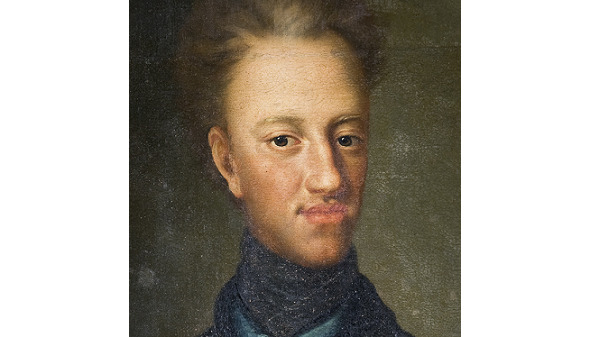
Charles the Twelfth (1682—1718), opponent of Peter the Great
Both sides take time out to regroup and continue the battle. At nine o’clock the Swedes attack again. This time, captured or blocked redoubts do not divide the armies. The forces of the opponents are. Russians – 25,400 infantry, 9—12,000 noble cavalry, with 72 guns, Swedes – 8,300 infantry, 9,000 cavalry, 4 cannons used for signaling. This is followed by a frontal three-hour battle. The career infantry of Charles the Twelfth sees a higher purpose in battle. Accustomed to adversity, Puritans march into battle, singing religious hymns. At one time, Protestant Swedes were the best fighters in Continental Europe. An important role in the battle is played by the Russian core, breaking the Swedish king’s stretcher. The rumor about the death of the commander discourages the army. The Swedes retreat to the wagon train, where 7,000 cavalrymen and several thousand Cossacks are in reserve, then to the crossing over the Dnieper. Ahead of the retreating Karl with only a few dozen retinues. He manages to escape to the Ottoman allies, now Ukrainian Bendery. Here the king, without getting out of bed, will appeal to the Swedish government to send new troops for a year. The remaining army, including 12,575 soldiers and 3,000 non-combatants, surrenders.
Losses of the parties in the battle. Swedes – 9,300 killed, 15,000 prisoners. Russian army – 1400 dead. Captured Swedes are marching defeated through the streets of Moscow. They will return home, due to the ongoing war, only after many years.
In 1710, without waiting for the end of the armistice, wishing to return Azov as soon as possible, and in response to Peter’s too zealous demands to expel Karl from Bendery, Turkey declares war on Russia.




